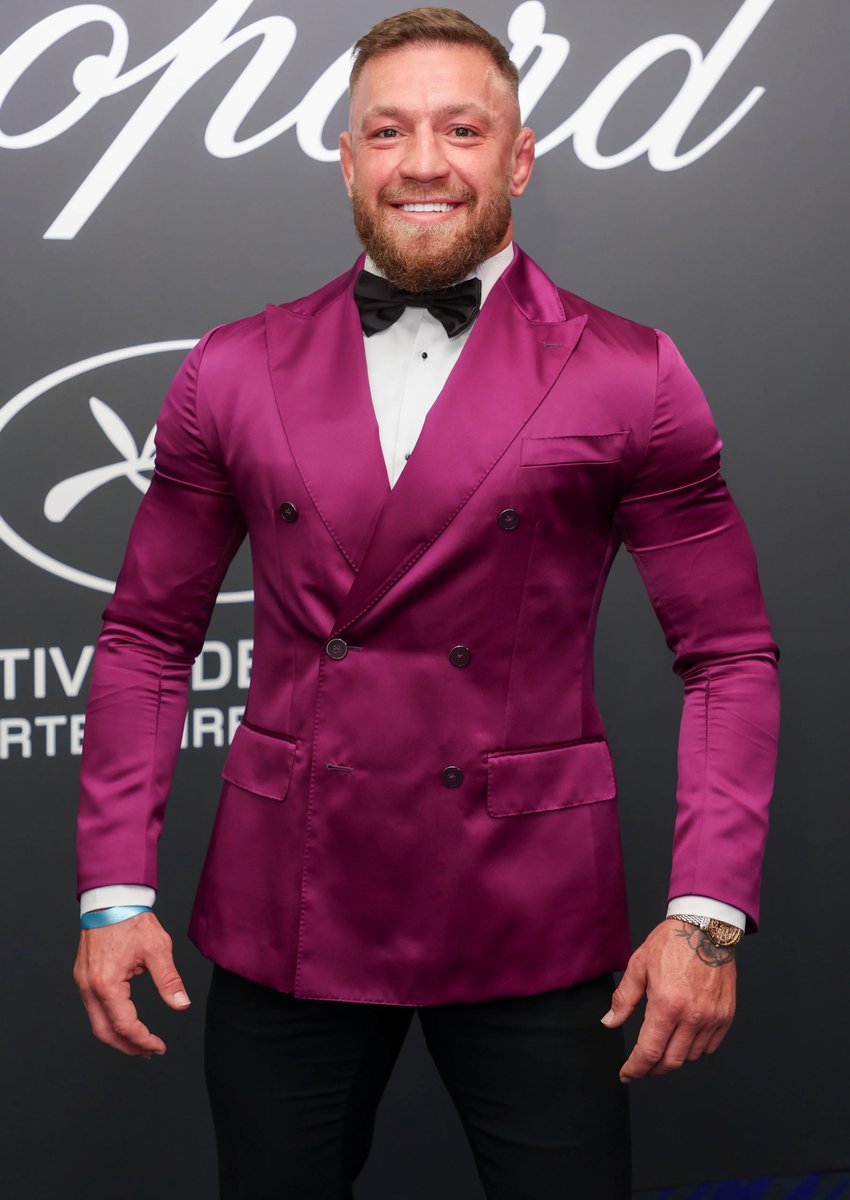https://twitter.com/dieworkwear/status/1804290578420764780
I agree that aesthetics are subjective, but not as subjective as some people think. In other words, it’s not subjective in the sense that “anything goes.” Rather, it depends on first principles. Will explain. https://t.co/kipEC5kjiT
Everything I post about tailored clothing begins with the premise that there was something special about the ways in which men wore tailored clothing from about the 1930s through the 1980s.

If someone shares that view, then some things naturally follow. For instance, the shape, silhouette, and fit of a tailored jacket. Here are two muscular figures. One follows the principles of classic tailoring closer than the other.

This premise is not an objective truth. It may be that someone thinks Conor McGregor here looks better than Cary Grant. If so, then my ideas would not follow because that person has different aesthetic preferences and goals.

Incidentally, this is true for any aesthetic: 1970s outdoors style, 1980s punk, 1990s grunge, or streetwear. Everything starts with the cultural aesthetic you’re interested in and understanding that language.

For instance, Yohji Yamamoto, who includes tailoring in his collections, is not trying to dress his customers up like 1960s Ivy League students. So, his tailoring does not follow many of these “rules.” (I think his stuff looks great, by the way)

Some people have accused me of being into historical cosplay. IMO, if you understand the contours of what makes a certain aesthetic appealing, you can figure out how to wear it in ways that look more natural today. These look very natural and modern to me:

Another example: by knowing how Prince Phillip dressed, you can more easily wear a tweed jacket in a way that makes cultural sense. IMO, the third outfit looks better than the second. It’s both more contemporary and classic at the same time. Has cultural language.

I can’t prove this fabric is ugly in the way a mathematician may be able to prove an equation (although those also rest on first principles/ assumptions).

But if you think there is something special about the ways in which men wore spring/ summer tailoring in the past, then that blueberry plaid fabric is not it.

Reasonable people will ask: “What about room for innovation, self-expression, and whimsy?” David Hockey is a great example of all these things. Achieving this still requires an understanding of the past and cultural language, as well as having a bit of personality.

To my eye, the only thing these fabrics say is: “I went to a mid-tier made-to-measure clothier who had lots of Italian fabric. I also have no idea how men dressed in the past, but I want to look fancy.”

Indeed, we see all the markers for such tailoring: tight fits, short jackets, low-rise trousers, and skimpy lapels that sit downstream of early 2000 trends.

If someone doesn’t share my view and instead prefers different aesthetics, then my views do not follow.
Although I suspect that some ppl may believe they are dressing according to traditional notions of “Good Taste” but don’t know what they’re doing.

you: is there anything more subjective than “ugly fabric?”
me: following from first principles, here are the sociological, cultural, and historical reasons why your sport coat fabric is considered bad taste

